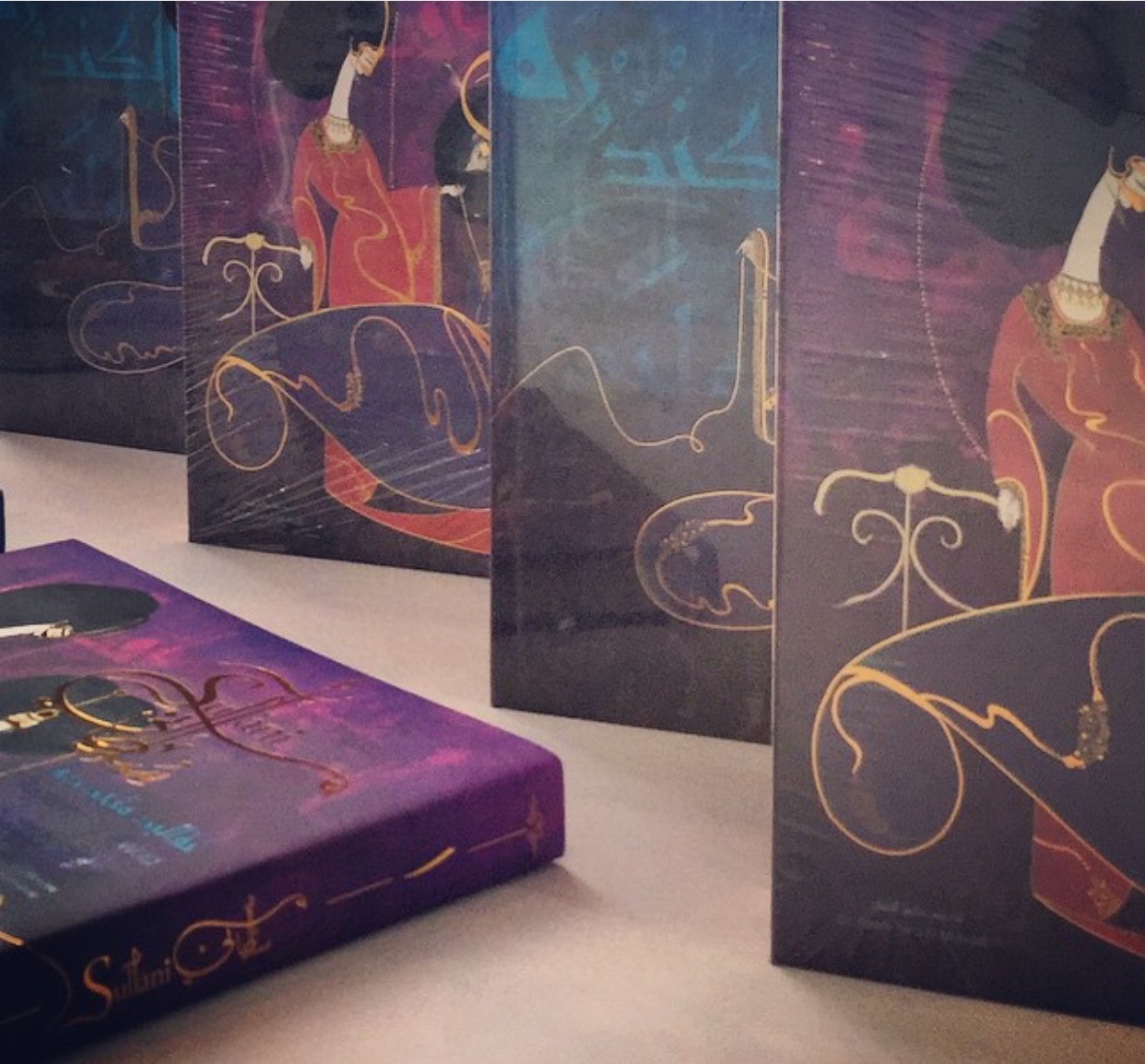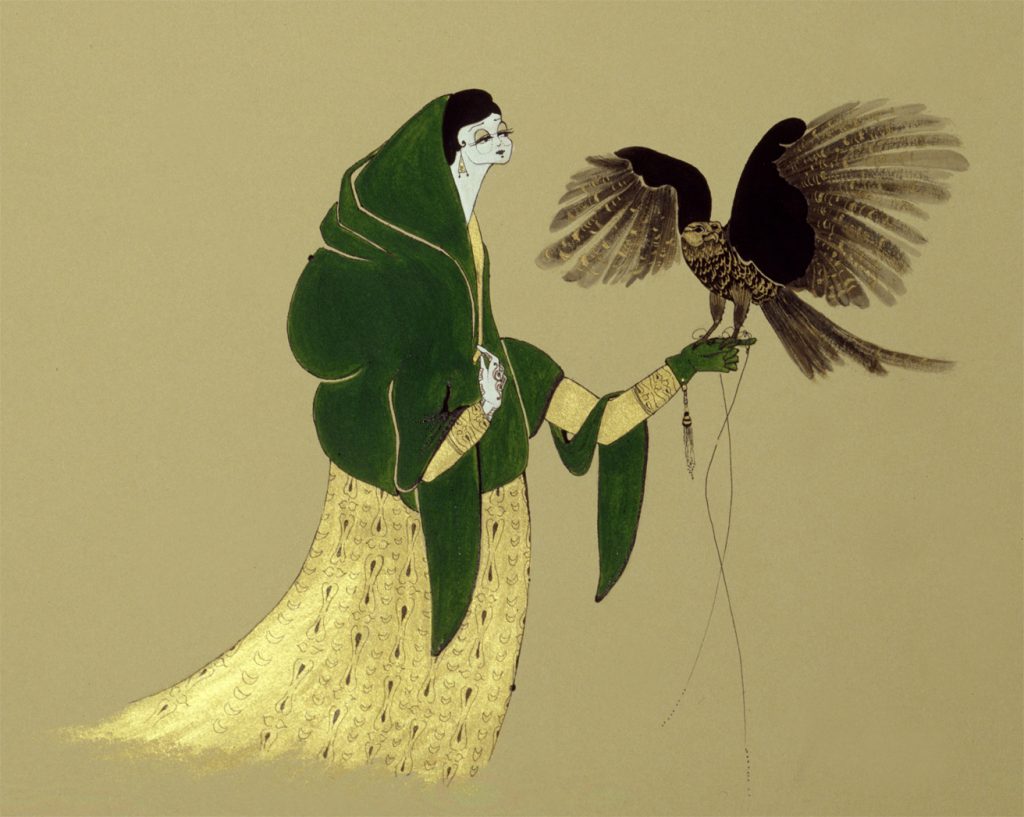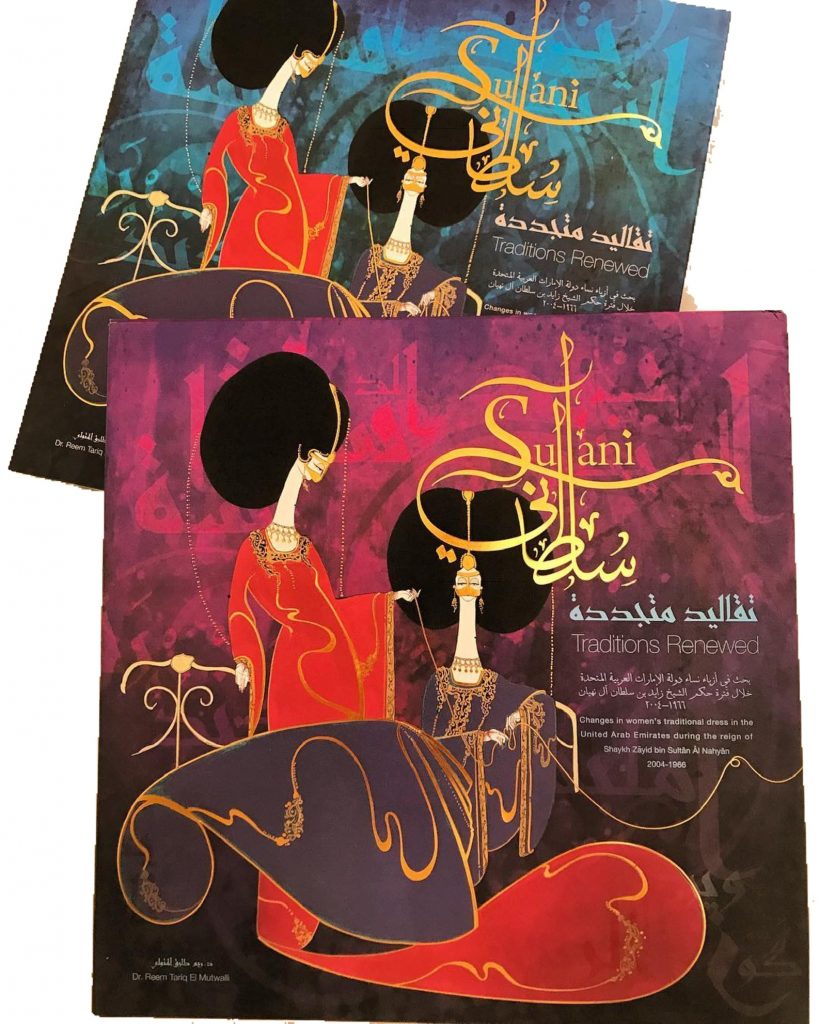




Dr Reem El Mutwalli’s love and lifelong infatuation with textiles, and in particular Emirati women’s dress, started at a very young age. Growing up surrounded by the women of the UAE royal family, Reem understood that she had a unique insight into the mostly enclosed lifestyle of Emirati women.
It was from Shaikh Zayed Bin Sultan Al Nahyan, founding father of the UAE, that Reem learned the importance of wearing traditional dress. He believed that traditional dress should be part of everyday life, and not become a ‘costume’ to only be worn on special occasions. He encouraged all Emirati citizens to wear traditional dress on a daily basis.

It was her childhood, immersed in tradition and surrounded by women who adored rich textiles, unique designs, precious jewellery and ornate embellishing, that set Reem on a path filled with art, design, culture, and traditional textiles.
It was also this era of rapid post-oil development that set Reem on a path of conservation and documentation, which ultimately led to her doing her PhD in Islamic art and archaeology focusing on dress in the Arab world, with the UAE as the case study.
When Reem started her research, she already owned a substantial collection of dresses that were either commissioned by her or gifted by friends and relatives. “I began to look at my collection more academically. Whatever I had amassed needed to be organised, catalogued, and properly chronicled. Only then could I see where I needed to fill in holes in the collection and find specific pieces, I needed to add to make it a proper historical collection.”

Because of her close relationships with the women of the royal family, Reem had access to unique examples from private collections. “Interest in providing help was so high that an older form of dress presently extinct, the gold-studded mask (burghu) was commissioned by Shaykhah Hamdah bint Mohammed Al Nahyan for the benefit of the study. Shaykhah Hamdah was also the first to kindly grant permission to photograph her own gold-studded dress (thawb Thawb: (Arabic: thawb, Pl. Athwāb/thībān), can be pronounced thobe Thobe: (Arabic: thawb, Pl. Athwāb/thībān), can be pronounced thawb or tobe Tobe: (Arabic: thawb, Pl. Athwāb/thībān), can be pronounced thawb or thobe based on locale. The standard Arabic word for ‘fabric’ or ‘garment’. It can refer to a qamīs-like tunic worn by men and women in the Arabian Peninsula, Iraq, the southern and south-western ports and islands of Iran, and some countries in East and West Africa. More specifically, it can refer to the square-shaped Bedouin overgarment worn by women. based on locale. The standard Arabic word for ‘fabric’ or ‘garment’. It can also refer to a qamīs-like tunic worn by men and women in the Arabian Peninsula, Iraq, the southern and south-western ports and islands of Iran, and some countries in East and West Africa. More specifically, it can refer to the square-shaped Bedouin overgarment worn by women. or tobe Tobe: (Arabic: thawb, Pl. Athwāb/thībān), can be pronounced thawb or thobe based on locale. The standard Arabic word for ‘fabric’ or ‘garment’. It can refer to a qamīs-like tunic worn by men and women in the Arabian Peninsula, Iraq, the southern and south-western ports and islands of Iran, and some countries in East and West Africa. More specifically, it can refer to the square-shaped Bedouin overgarment worn by women. based on locale. The standard Arabic word for ‘fabric’ or ‘garment’. It can also refer to a qamīs-like tunic worn by men and women in the Arabian Peninsula, Iraq, the southern and south-western ports and islands of Iran, and some countries in East and West Africa. More specifically, it can refer to the square-shaped Bedouin overgarment worn by women in the Arabian Gulf region. ) that once might have accompanied such a face cover, and graciously presented me with a replica of it, opening the door for others to follow suit and allow me to photograph their dresses.”
With the help of Abd Allah Husayn Khunji Khunjī: Abdullah Hussain Khunjī is a renowned Emirati fabric merchant of Iranian origin. He opened the first specialised textile store in Abu Dhabi central market after returning from a trip to Switzerland companying the late UAE founding father Shaikh Zayed bin Sultan al Nahyan early 1970’s. Today he commands a fleet of stores and businesses across the seven emirates., one of the first merchants involved in textile trading in the UAE and the prominent court supplier in the emirate of Abu Dhabi, Reem was able to source a comprehensive collection of traditional textiles used in the dress of UAE women.
Her lifelong friendship with the women of the ruling household gave Reem the unique opportunity to study rare photographs and interview the women about their wardrobes. She spoke to members of the ruling families, prominent elite, professional women in the tailoring field as well as professional male pioneers like tailors and textile merchants.

Reem also considered outside influences like climate, migration, economic activity, expatriate influences, politics, religion, tribal hierarchy, gender roles, economic transformation and newfound wealth, all of which contributed to the way people dressed and presented themselves in society.
It the next phase of her research, Reem looked at the process of dressmaking, including measuring and sewing methods, as well as at textiles - from the different types, to the ways of acquisition; and the different kinds of embellishments and decoration.
In the last part of her research, Reem studied the different forms of clothing, from her own collection and those of others, including facemasks, head covers, body covers, dresses, underwear and footwear. She also looked at the different ways of storing, caretaking and maintenance of a woman’s wardrobe.
Reem’s research and PhD thesis culminated in the publication
of the book Sultani
Sulṭānī: (Arabic: sultān: king). In the UAE the term denotes to silk satin fabric in multiple vertical striped colours, commonly used for tunics (kanadir) and underpants (sarāwīl). Also refers to book: Sultani, Traditions Renewed, Changes in women’s traditional dress In the United Arab Emirates during the reign of the late Shaykh Zāyid Bin Sultan āl Nahyān, 1966-2004, By Dr. Reem Tariq
Ṭariq: (Arabic; Synonym: tulle_bi_talli
Tūlle_bi_tallī: (French: Tulle – a city in France where fine material for veil was first made; Turkish: tel – wire; Synonym: tariq; talli; badla; khus_dozi ), series of small metal knots made on a woven net ground as embellishment. The term is commonly used in the North African Arab region specifically in Egypt.

It is a two volume, 990-page tome dedicated to the late Shaykh Zayed bin Sultan al Nahyan and his wife Shaykhah Fatima bint Mubarak, also known as ‘the Mother of the Nation.’
The book is filled with rare photographs from Reem’s inner circle of friends as well as detail images of garments and embellishments taken by her brother, photographer Zayad el Mutwalli. Lush illustrations throughout the book and on the cover are by Fatma Lootah (UAE) and Hayv Kerman (Iraq). The superbly designed calligraphy is done by Mohammed Mandi who also designed the UAE banknotes and the cupola of the Sheikh Zayed Grand Mosque in Abu Dhabi.

In addition to the wealth of written information and research, the two-volume book set is a work of art in itself. It was first published in 2011 and sold out, followed by the second edition in 2015 and is available on request from the author.
Reem’s research and the eventual publication of the Sultani
Sulṭānī: (Arabic: sultān: king). In the UAE the term denotes to silk satin fabric in multiple vertical striped colours, commonly used for tunics (kanadir) and underpants (sarāwīl). Also refers to book: Sultani, Traditions Renewed, Changes in women’s traditional dress In the United Arab Emirates during the reign of the late Shaykh Zāyid Bin Sultan āl Nahyān, 1966-2004, By Dr. Reem Tariq
Ṭariq: (Arabic; Synonym: tulle_bi_talli
Tūlle_bi_tallī: (French: Tulle – a city in France where fine material for veil was first made; Turkish: tel – wire; Synonym: tariq; talli; badla; khus_dozi ), series of small metal knots made on a woven net ground as embellishment. The term is commonly used in the North African Arab region specifically in Egypt.